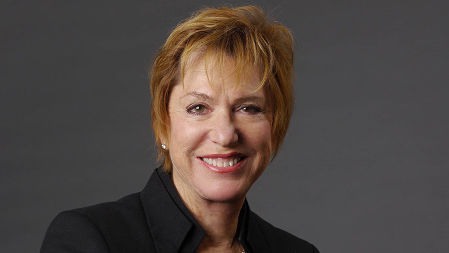Satellite Industry Discusses Its Role In Video Delivery
LAS VEGAS—Today there are more options to receive and consume video content than ever. Whether it is viewed on the big screen in the living room or on the smartphone, chances are satellite played a role in its delivery.
During today’s conference on Satellite Technologies, the role that the satellite industry plays in broadcasting and delivery of high-quality video content from virtually anywhere to any place on the planet will come into sharp focus.

Susan Irwin
The session will feature a satellite industry keynote speaker as well as three panel discussions that address the role that satellites high above the Earth continue to play in the delivery of ultra HD content, satellite broadband technology and even delivery of in-flight satellite entertainment and connectivity for the aviation industry.
The Satellites Technologies conference will feature the “Roundtable on Satellite Technology Innovation: Satellite Conquering the Challenges of Mobile Connectivity,” moderated by Susan Irwin, president of Irwin Communications and longtime satellite industry consultant.
This will include discussions on how the industry is addressing the technical challenges of delivering broadband from space and providing terrestrial-based Wi-Fi performance to mobile customers in aircraft at 40,000 feet as well as to those on the ground or at sea.
“The confluence of mobile and fixed satellite services, the proliferation of smallsats, NGSO constellations and HTS, and the evolution of innovative antenna technologies like Kymeta’s are the factors contributing to mobility becoming the hottest growth market for the satellite industry,” said Irwin.
Along with the opportunities that satellites bring in delivery of content to viewers, so, too, will the conference spotlight efforts to resolve issues that the industry has faced.
“Satellite interference is a persistent problem facing broadcasters across the globe,” said Martin Coleman, executive director of the Satellite Interference Reduction Group (IRG), who is moderating the panel “Is Technology Actually Solving Interference for the Broadcasters?”
“Although it only affects a minor number of services, the effects are naturally detrimental to the broadcasters when it does occur, especially if it affects live transmissions,” said Coleman, who will be joined by other solution providers and broadcasters. “This is indeed why it was the broadcasters who asked the satellite industry to resolve it several years ago.”
Coleman will discuss ways the industry is already tackling the problem, and the session panel will offer insight into the real challenges that broadcasters face as well as the tools and techniques that are being employed to solve the problems.
“We have an increasing range of tools at our disposal, and one of the biggest barriers when it comes to resolving interference for broadcasters is getting the broadcasters on board to do their bit,” said Coleman. “This session will be about setting down the gauntlet for broadcasters to adopt the available technology and help the operators help them.”
Satellites will continue to fly high and deliver the content to virtually any part of the world below. This will be addressed in sessions including “Satellite’s Growing Role in Over-The Top Content Delivery,” which will look into distribution of Ultra HD 4K, 8K and beyond; and “Satellite Broadband — New Constellations and High-Throughput Satellites Pointing to a Market Revolution, which will discuss global distribution strategies.
“The role that satellites play in the delivery of media and content is on the verge of a massive renaissance,” said Tom Stroup, president of the Satellite Industry Association.
“Enormous technological innovation in high-throughput data and antenna technology combined with revolutionary changes in low-cost, high-volume satellite manufacturing, the emergence of over-the-top (OTT) delivery, plus the continued development of interference reduction technologies will impact the way broadband services and content are delivered on land, sea and in the air,” Stroup said. “Plans for literally thousands of new spacecraft are being developed that will change the way consumers will receive content and services — some in ways we cannot even begin to conceive.”
Copyright NAB 2017.
Get the TV Tech Newsletter
The professional video industry's #1 source for news, trends and product and tech information. Sign up below.
